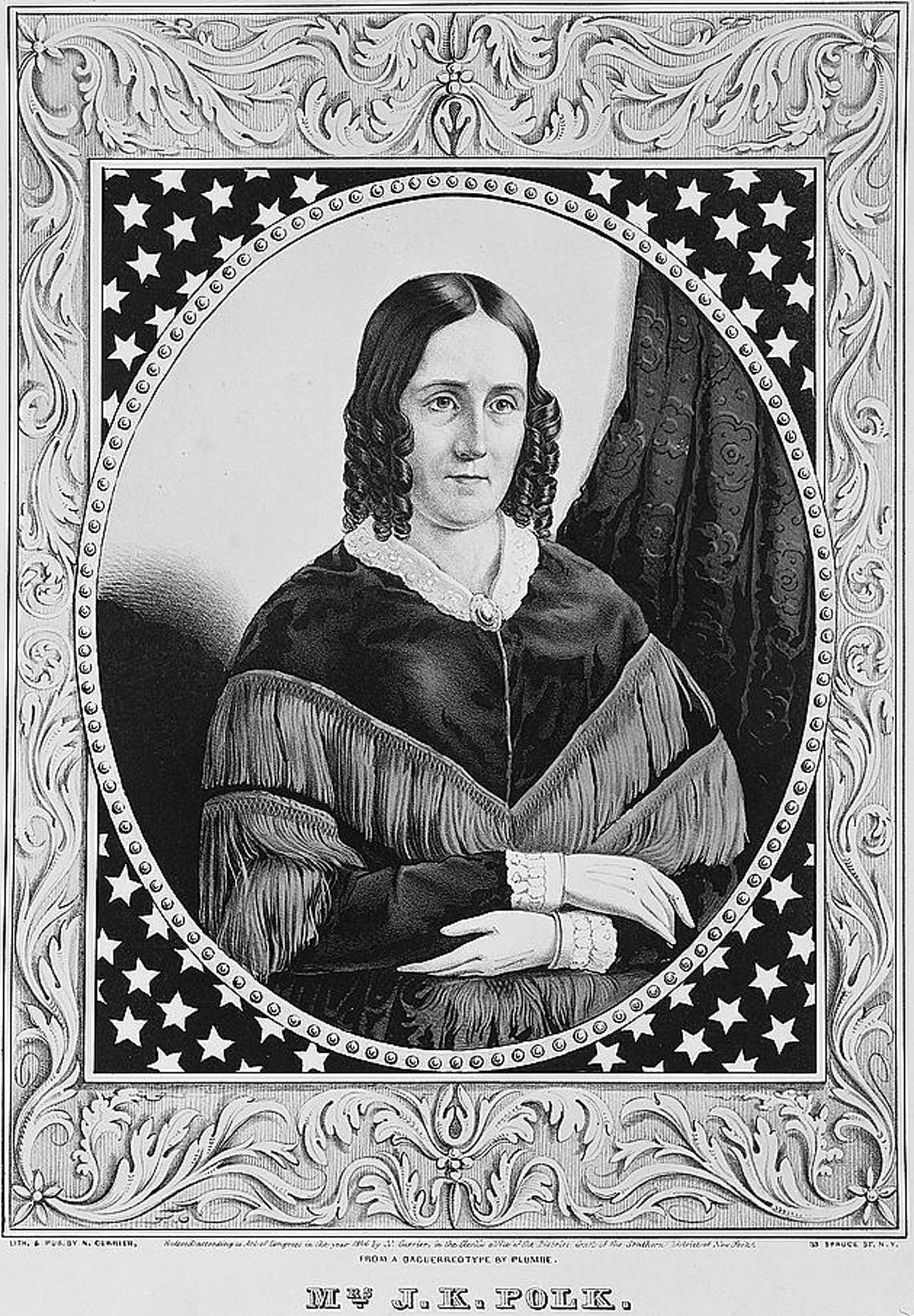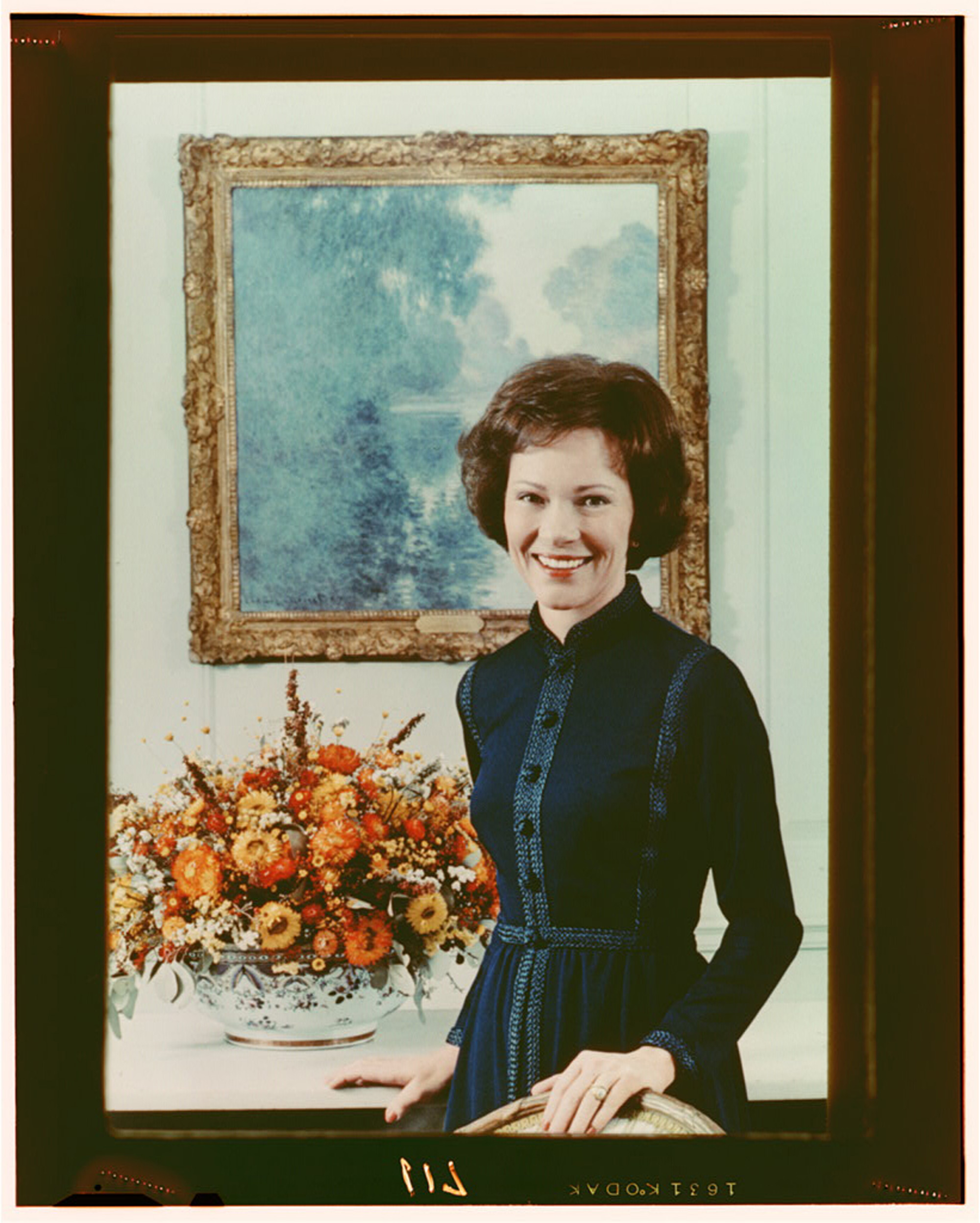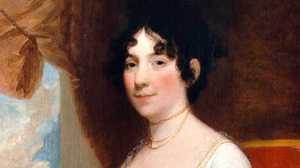Often called “the first First Lady,” Dolley Madison defined the role of the President’s wife and hostess. With her behind-the-scenes influence on political policy and her expansion of the expected role of the First Lady, Dolley Madison was one woman among many who broke new ground in the White House. Browse this gallery of other first ladies.
-

Martha Washington (1789-1797)
Married to the first President of the U.S., George Washington, Martha Washington was not enthusiastic about her role in the capitol. Though she shied away from involvement in politics, the public saw her as a heroine when she aided financially needy veterans of the Revolutionary War.
Credit: Library of Congress -

Abigail Adams (1797-1801)
John and Abigail Adams were the first to live in the White House after the U.S. capitol was moved to Washington, D.C. In 1800, Abigail took an active role in politics, championing women’s rights and opposing slavery. Her deep involvement in the political lives of her husband and son, John Quincy Adams, were widely recognized.
Credit: Library of Congress -

Dolley Madison (1809-1813)
Hosting weekly socials, Dolley Madison helped usher a new sense of bipartisanship into the White House. Her social acumen, adoption of specific causes, and deliberate behind-the-scenes politicking in Washington would come to define the role of the First Lady as we know it today.
Credit: Library of Congress -

Sarah Polk (1845-1849)
Her wealthy, Southern upbringing included a formal education rarely offered to women at the time. Privately, Sarah helped President James Polk write speeches and letters, and he regularly sought her advice. Sarah Polk consulted with Dolley Madison, and she was respected for entertaining both political parties during the Civil War.
Credit: Library of Congress -

Harriet Lane (1857-1861)
The niece of James Buchanan (the only president who never married), Harriet Lane was a vivacious young White House hostess. One of the few women to adopt the role of First Lady without being married to the president, Harriet Lane donated her personal art collection which formed the core of the National Gallery of Art, and she endowed what would become the Johns Hopkins Hospital pediatric center.
Credit: Library of Congress -

Mary Lincoln (1861-1865)
Though she was well-educated and born into a higher social strata than her husband, Mary Lincoln would become a partner to the President both intellectually and politically. Her tenure in the White House, however, is often defined by the tragic deaths of her son and husband. Though she had family members fighting in the Confederate Army, Mary Lincoln fought with her husband to save the Union, supporting Union soldiers and newly-freed slaves in her causes.
Credit: Library of Congress -

Frances Cleveland (1886-1889, 1893-1897)
At 21, the youngest first lady was also the first to be married in the White House. Immensely popular, Frances held two receptions every week and encouraged working women to attend.
Credit: Library of Congress -

Caroline Harrison (1889-1892)
The progressive wife of Benjamin Harrison was very active during her time living in the White House. Along with establishing the White House china collection, Caroline raised money for the Johns Hopkins Medical School after it agreed to admit women, and she participated in the founding of the Daughters of the American Revolution by becoming their first President General.
Credit: Library of Congress -

Edith Roosevelt (1901-1909)
If Dolley Madison created the office of the First Lady, Edith Roosevelt expanded it. Edith assisted husband Theodore by keeping him informed of current events highlighted in newspapers and warning him if he spoke too long by lightly tapping the table. She spearheaded the renovation of the White House by adding the West Wing and restoring the East Wing.
Credit: Library of Congress -

Edith Wilson (1915-1921)
Edith Wilson acted as confidant to her husband Woodrow during World War I and often sat in on meetings the President conducted with his cabinet. When Woodrow suffered a stroke in 1919, Edith was responsible for the campaign leading the public to believe the President was suffering from exhaustion, and the First Lady essentially took the reigns until her husband recovered.
Credit: Library of Congress -

Florence Harding (1921-1923)
A champion for women’s rights, Florence Harding connected with American women of the 1920s by showcasing the contributions of professional women like Madame Curie and encouraging women to pursue careers outside of the home. Florence was also popular for cutting energy use in the White House and joining the movement to boycott sugar during the depression when it became too expensive for many households.
Credit: Library of Congress -

Eleanor Roosevelt (1933-1945)
One of America’s most renowned First Ladies, Eleanor was the first to reach out to the public through press conferences, radio addresses, appearances and lectures across the country, and a newspaper column that she wrote daily - the equivalent of today’s blog. She was also one of the first to use her position to advance her causes, particularly civil rights and women’s rights.
Credit: Library of Congress -

Jacqueline Kennedy (1961-1963)
Already admired by the public as a senator’s wife, Jackie Kennedy brought a heightened level of style and taste to the White House. She worked to turn the building into a museum for the public as well as the President’s residence. After John F. Kennedy’s assassination Jackie would gain even more public admiration for her show of strength and poise.
Credit: Library of Congress -

Betty Ford (1974-1977)
After being thrust into the role of First Lady following Richard Nixon’s resignation, Betty Ford broke barriers by openly discussing the taboo topics of her past mental health treatment, breast cancer awareness and her own mastectomy, and later her dependency on alcohol and drugs. She was an outspoken advocate for equal rights and the legalization of abortion.
Credit: Library of Congress -

Rosalynn Carter (1977-1981)
A politically active First Lady, Rosalynn Carter participated in many of the President’s briefings and meetings with his cabinet. She focused national attention on mental issues and the elderly as well as the performing arts.
Credit: Library of Congress -

Nancy Reagan (1981-1989)
During her time in the White House Nancy Reagan was most noted for her “Just Say No” anti-drug campaign, which is considered the first major public initiative undertaken by a First Lady. She was also widely noted for her fashion sense and glamour, and for her involvement in the arts.
Credit: Ronald Reagan Library -

Hillary Clinton (1993-2001)
A lifelong career woman, Hillary Clinton had long been an advocate for children and families. A powerful First Lady, she headed the Task Force on National Health Care Reform, and after leaving the White House Hillary launched her own political career becoming a Senator from New York and then the U.S. Secretary of State.
Credit: National Archives









